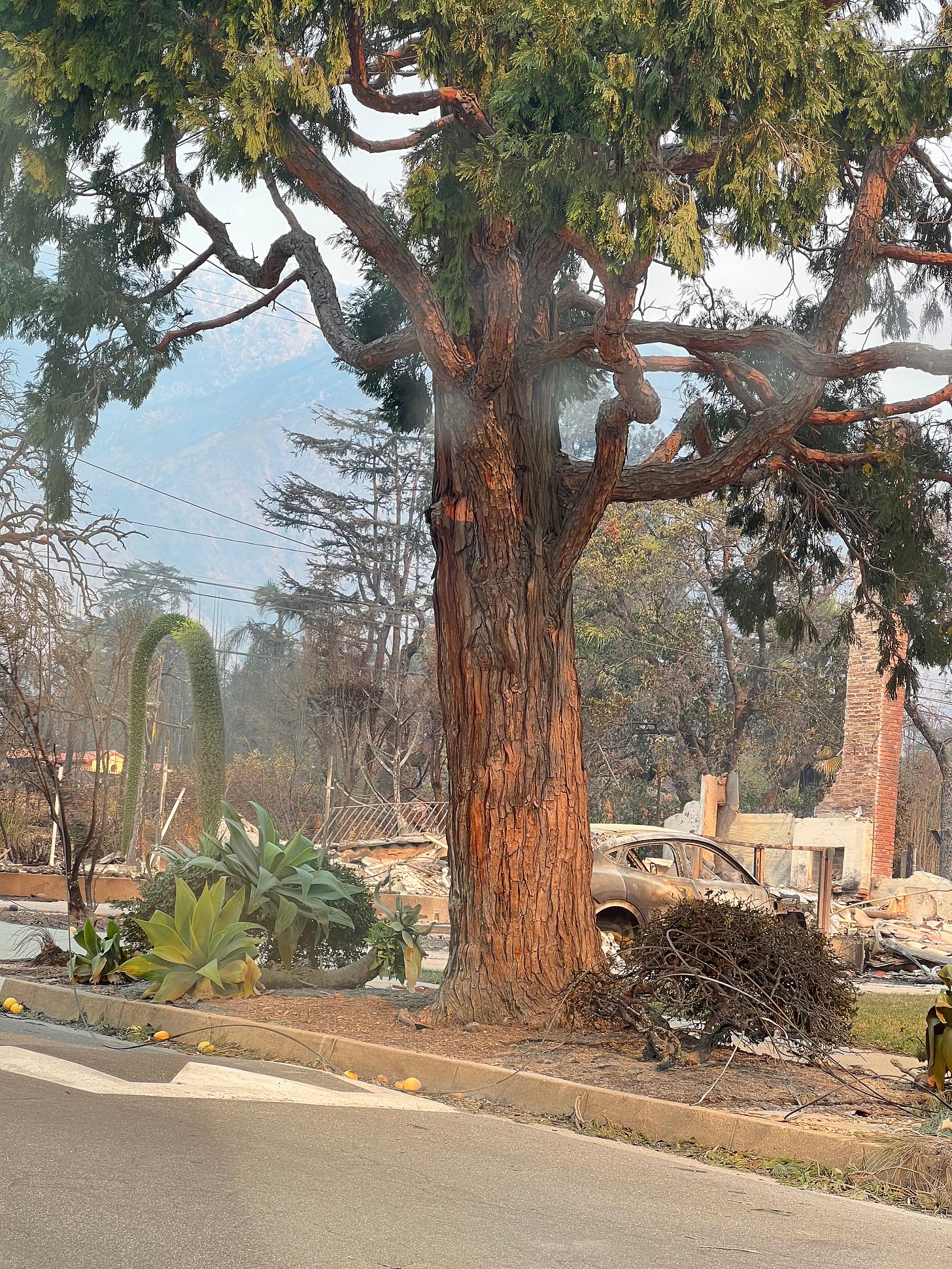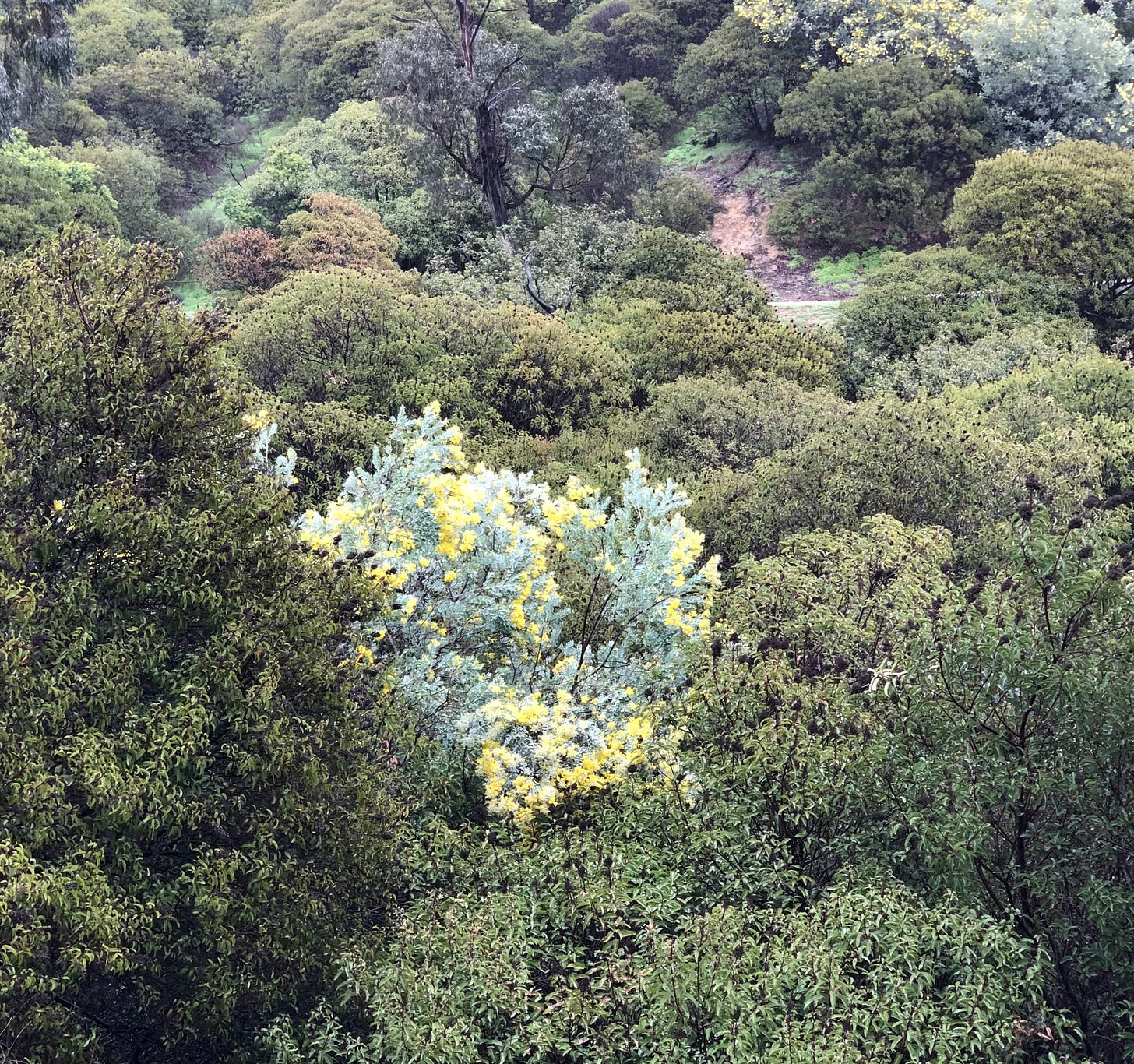When rain is forecasted for Los Angeles, I never feel confident about our chances of precipitation until I see water hitting the ground. Sometimes, the moisture never seems to leave the sky. Other times, it drenches my godfather’s neighborhood, only to leave mine dry. And then, there are the atmospheric rivers, of course—cascades of water that have tested our city’s flood control system, made waves in the LA river, and caused giant sinkholes.
Atmospheric rivers are ocean-born storms that transport wind and large amounts of water vapor from the tropics to the poles. Eventually, we are told, a “Big One” of these will find us too—a “torpedo of moisture,” as The New York Times called it in 2022—pummeling LA with as much as two inches of rain per hour.
Don’t worry, there’s no major atmospheric river forecasted for this weekend. In fact, rain is still only a possibility. But, a rainy season may be ahead. Read on to learn more about what the rain will bring—and how we can prepare.
Will the rain help the fires?
Moisture is helpful for ameliorating the dry conditions that contributed to this month’s fires—and rainfall can also help wash away ash and contaminants that may be hanging out on the ground. But, where does it wash away to? And, how much rain is too much rain?
Rain could carry ash into our streams, ocean, and—in a worst case scenario—the reservoirs we use for drinking water (though much of our water comes from imported sources). Jane Williams, Executive Director of the California Communities against Toxics, and an award-winning environmental health and justice expert, said that she expects some of these contaminants to settle in our beaches. There are already several ocean water advisories due to fire runoff contamination in place right now.
Mayor Karen Bass has issued an emergency order to try to mitigate for landslides, and prevent hazardous runoff from ending up in the ocean. These efforts include:
Removing fire debris in advance of rainfall.
Diverting runoff from stormwater toward the sewer system.
Installing and reinforcing barriers on hillsides.
Will these attempts be successful? They probably can’t hurt. A failure to maintain public infrastructure has been noted as a potential factor in past post-fire landslides—but to truly prevent these events, we’d likely need to do more than clear debris and install temporary barriers.
Do we have to worry about landslides?
The rainfall predicted for this weekend is light, so it seems unlikely it will lead to immediate flash floods, landslides, and debris flows (fast-moving rivers of rock, earth and other debris saturated with water). But, it would be silly not to expect heavier rains at some point this winter or spring.
The California Watershed Emergency Response Teams and the United States Forest Service have already been studying the boarders of the fires in the Palisades and Altadena to identify burn zones, and issue hazard maps for floods and landslides. Hopefully these efforts will begin in at new fire sites soon, too. While current maps exist to help assess landslide and flash flooding risk—they often rely on FEMA data, which is can be extremely outdated. Hopefully, the surveys being conducted now will help us better understand flood and landslide risks for our new landscape.
In order to understand what may lie ahead, it can be helpful to look at the past. Landslides, flash floods and debris flows have occurred before, following fires in LA and surrounding areas—and they can be deadly. In 2016, the Thomas fire caused mudslides in Montecito a month later, which killed 23 people. More recently, in 2024, landslides following atmospheric rivers caused closures of canyon roads in Malibu and the evacuation of six people from their homes in Studio City.
If these events indicate anything, it’s to continue remaining ready for evacuation, even once fires cease. This doesn’t mean you need to live every day on high alert, but it does mean it’s important to understand risk in your location, know when to leave, and know where you would go (and what you would bring).
Understanding the fire-flood cycle in LA
Climate change is increasing temperatures in LA, and warmer air can hold more moisture; if you hate humidity and mosquitos, you’re probably already aware of this shift in LA’s climate. At the same time, extremely dry conditions have also persisted (soil moisture levels were recorded at below five percent in Los Angeles earlier this month, and LAist is still reporting low humidity and increasing winds right up until the light rain this weekend). These extreme shifts from wet to dry weather—or, “hydroclimate whiplash,” as some scientists refer to it—are exacerbated by climate change.
These are the conditions that led to the fires this month: Wet seasons triggered intense vegetation, which then dried out during periods of near drought. The result was a sort of thick brushy tinderbox, just waiting for the high dry Santa Ana winds to fuel a spark.
And, now the fires—which continue to emerge and burn—have left burn scars, which struggle to absorb water, heightening conditions for flash floods and landslides. There’s also the enormous amount of debris from burnt trees and buildings that could cascade down hills, if enough of that moisture gathers.
This fire-flood cycle poses a real risk to LA, and our city’s layout makes things worse, with houses pushed right up against the steep slopes of mountains. LA’s flood control system—which was installed after intense rains during the winter of 1913-1914—has withstood some major atmospheric rivers over the past few years, but engineers are concerned that it won’t be able to keep up with the level of sediment filling LA’s reservoirs. Fires and subsequent landslides certainly won’t help.
Safety Pin
Light rains this weekend shouldn’t cause major floods or landslides, but we’d be foolish not to expect these events in the near future. Climate change is exacerbating a fire-flood cycle in LA, that requires us all to remain vigilant about weather conditions and maintain an evacuation plan. If it wasn’t obvious by now, we are very much living through obvious impacts of climate change—and I somehow doubt Mayor Bass (or the president, or Governor Newsom) is going to save us. In the meantime, we have each other. Stay safe out there.






![[that viral tweet that says “climate change will manifest as a series of disasters viewed through phones with footage that gets closer and closer to where you live until you’re the one filming it.] [that viral tweet that says “climate change will manifest as a series of disasters viewed through phones with footage that gets closer and closer to where you live until you’re the one filming it.]](https://substackcdn.com/image/fetch/$s_!Wpz9!,w_1456,c_limit,f_auto,q_auto:good,fl_progressive:steep/https%3A%2F%2Fsubstack-post-media.s3.amazonaws.com%2Fpublic%2Fimages%2F11b72ce4-e52a-4a9e-bfb7-358625f68e00_366x328.png)